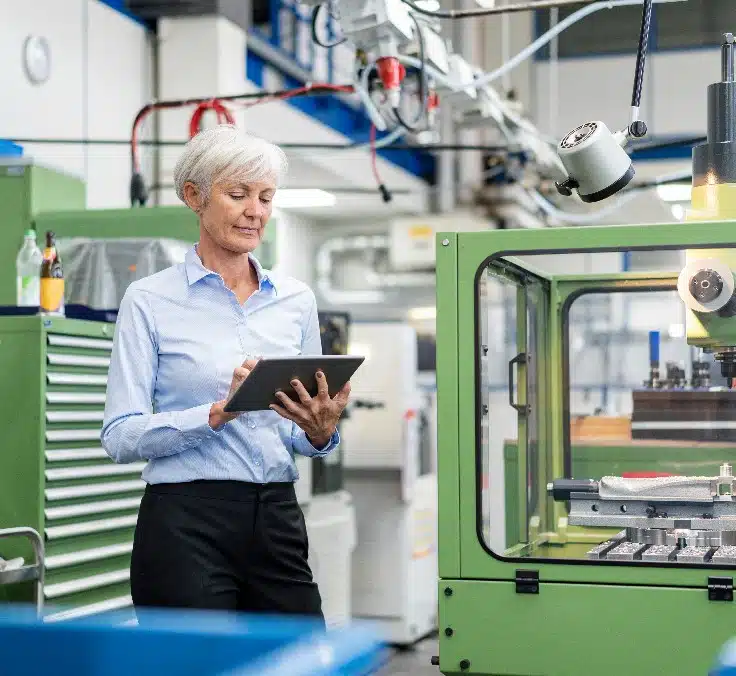Interview with Juan Fernández Palacios: Intergenerational collaboration is key to a more equitable and efficient labor market.

We speak with Juan Fernández Palacios, manager of the Fundación MAPFRE Ageingnomics Research Center, about senior talent. In view of the recent publication of the 3rd Senior Talent Map, we explore the employment situation of people over 55 in Spain and the crucial role they play in resolving the current demographic situation.
When we talk about senior talent, we’re talking about the skills, knowledge, and aptitudes that the older generation possesses or has accumulated. For our purposes, this generation includes the segment of the population that starts at 55 and ends at approximately 75 years of age.
This is where we have placed our focus, keeping in mind the need for some flexibility: sometimes we come across information and data that do not correspond to this segment exactly. For example, in the Senior Talent Map, we refer to seniors as people between 55 and 70 years of age. We don’t go as far as 75, because the number of seniors over 70 in the Spanish labor market is minimal. It’s practically negligible.
Why is it important to map senior talent?
That’s a good question. At the Fundación MAPFRE Ageingnomics Research Center, we aim to analyze, monitor, and measure the senior economy. The senior economy is the part of the economy that revolves around seniors: the set of activities and resources produced by and for the older generation. We do specific work on what seniors consume, what they purchase, what their spending priorities are, and so on.
We also analyze how the most relevant companies relate to seniors: whether they use specific channels to maintain relationships with them, whether there are specific products or special conditions for engagement, etc. We also analyze the role of public authorities as it concerns population aging. And, finally, we analyze how seniors contribute to the economy through companies, either as professionals or self-employed workers; i.e., how they’re integrated into the labor market.
We believe that society, especially in Spain, doesn’t capitalize on senior talent as much as it could.
In Spain specifically, what’s the current situation of senior talent?
The situation facing senior talent in Spain, according to our analysis, is not optimal. Our work culture pushes people to exit the labor market early, which effectively wastes the experience, skills, and knowledge that people over 55 can contribute. We go from having a person aged 65 who is doing their job and contributing to the company—and, therefore, to the economy—to having them at home the next day doing nothing.
Ageingnomics believes that, as a country, we cannot afford to carry on this way. The current trend toward early retirement and the lack of flexibility in working conditions are not good for seniors, as they generate an imbalance in some of the basic systems of our welfare state, such as pensions. The right framework must be put in place so that those who are able and willing to continue productive activity can do so voluntarily.
And how does this affect the relationship between youth and seniors in the labor market?
It affects it in several ways. It creates a generation gap in which young people may perceive seniors as competition rather than as a resource. This perception can lead to tensions in the workplace. And the poor integration of seniors in the labor market prevents young people from benefiting from their experience and knowledge. We believe that fostering intergenerational collaboration is key to a more equitable and efficient labor market.
How can companies harness senior talent more effectively?
Companies can tap into senior talent in a number of ways. First, it’s important to change mindsets and overcome age stereotypes. It’s not just about hiring seniors, but about creating an inclusive work environment where generational diversity is recognized and valued. In addition, companies can implement reverse mentoring programs, where seniors can learn from juniors and vice versa.
It’s also essential to offer flexible working conditions that adapt to the needs of seniors, enabling them to continue to contribute their experience and knowledge. Continuous training is also key to keeping the skills of seniors up to date. In short, it’s about integrating seniors into the culture of the company and recognizing the value they bring.
Before we go, what would be your main message about senior talent?
Our main message is that senior talent is a valuable and underutilized resource in Spain. We need to retain, leverage, and optimize our senior talent. It’s essential to change perceptions and harness the experience and knowledge of people over 55. This will not only benefit seniors, but will also contribute to a more equitable labor market and the sustainability of our economic and welfare system.
RELATED ARTICLES:




